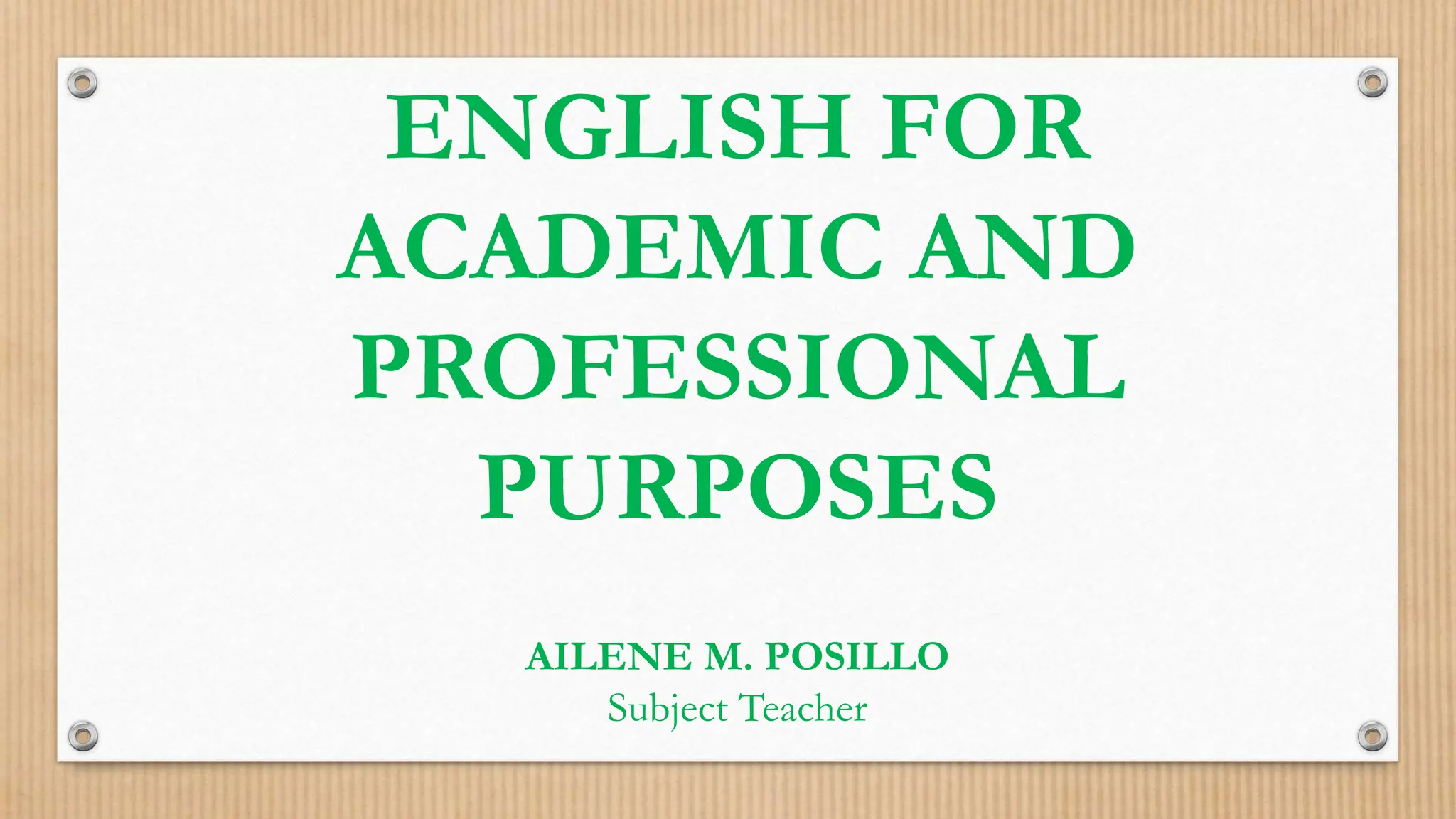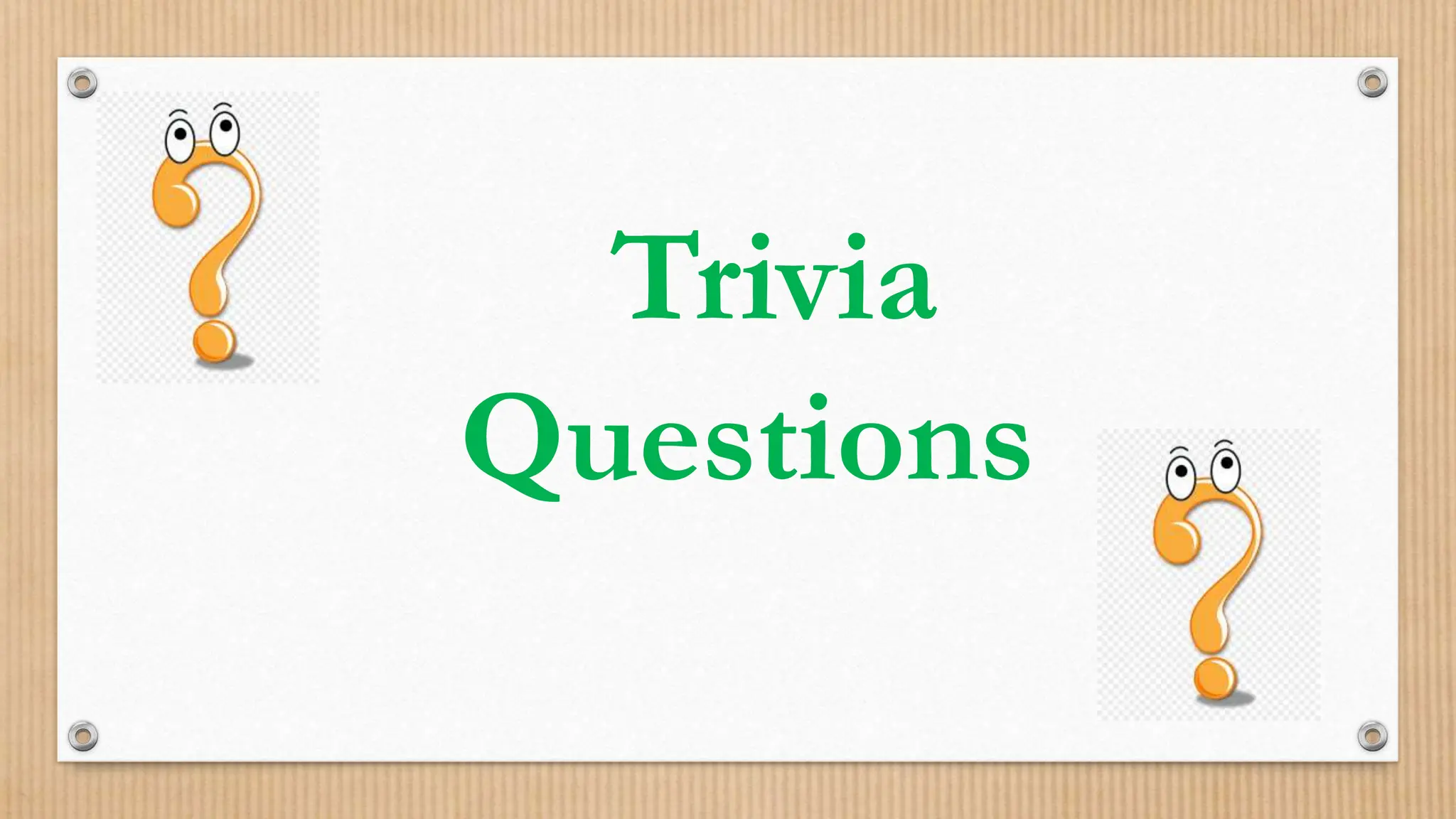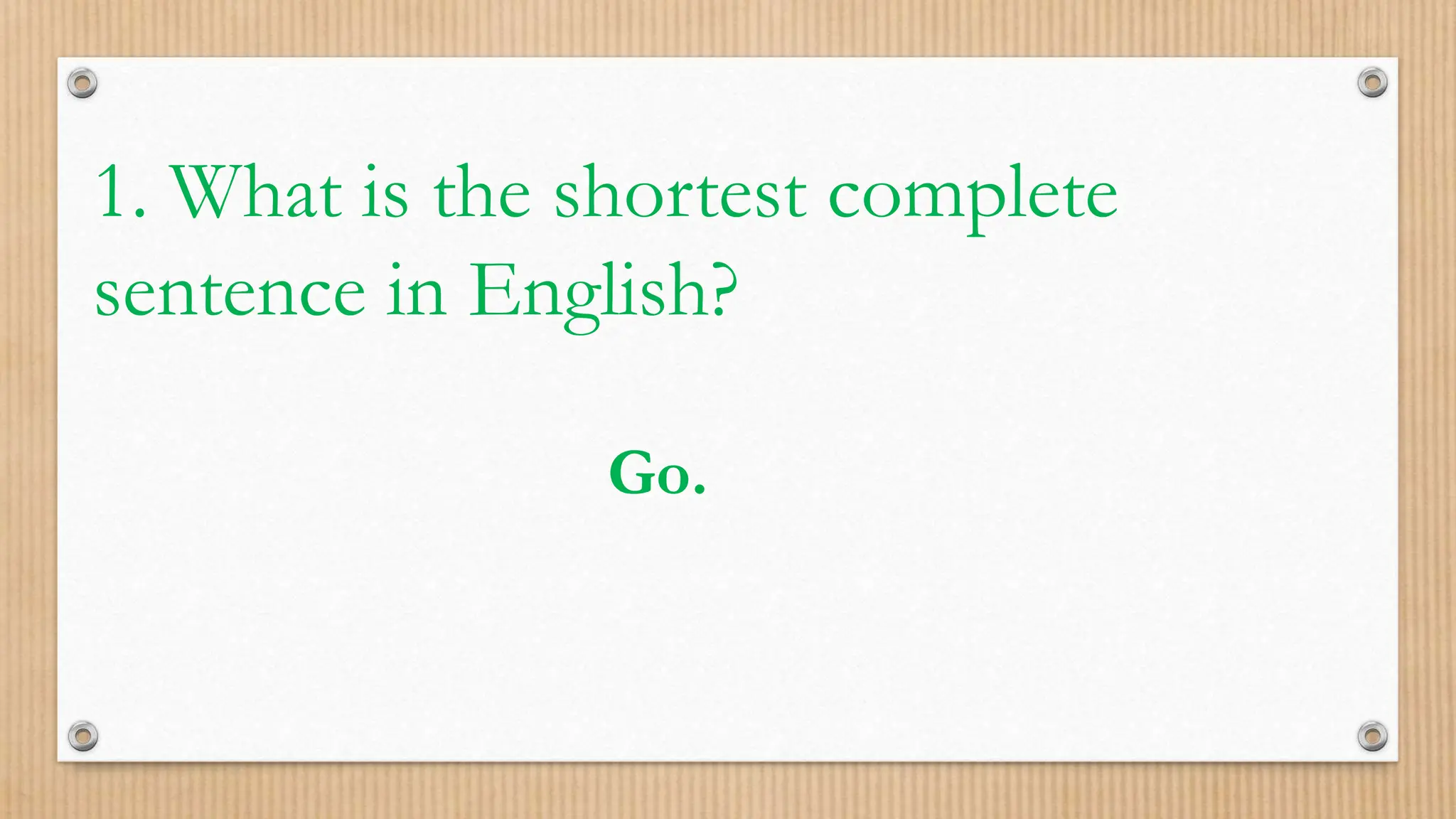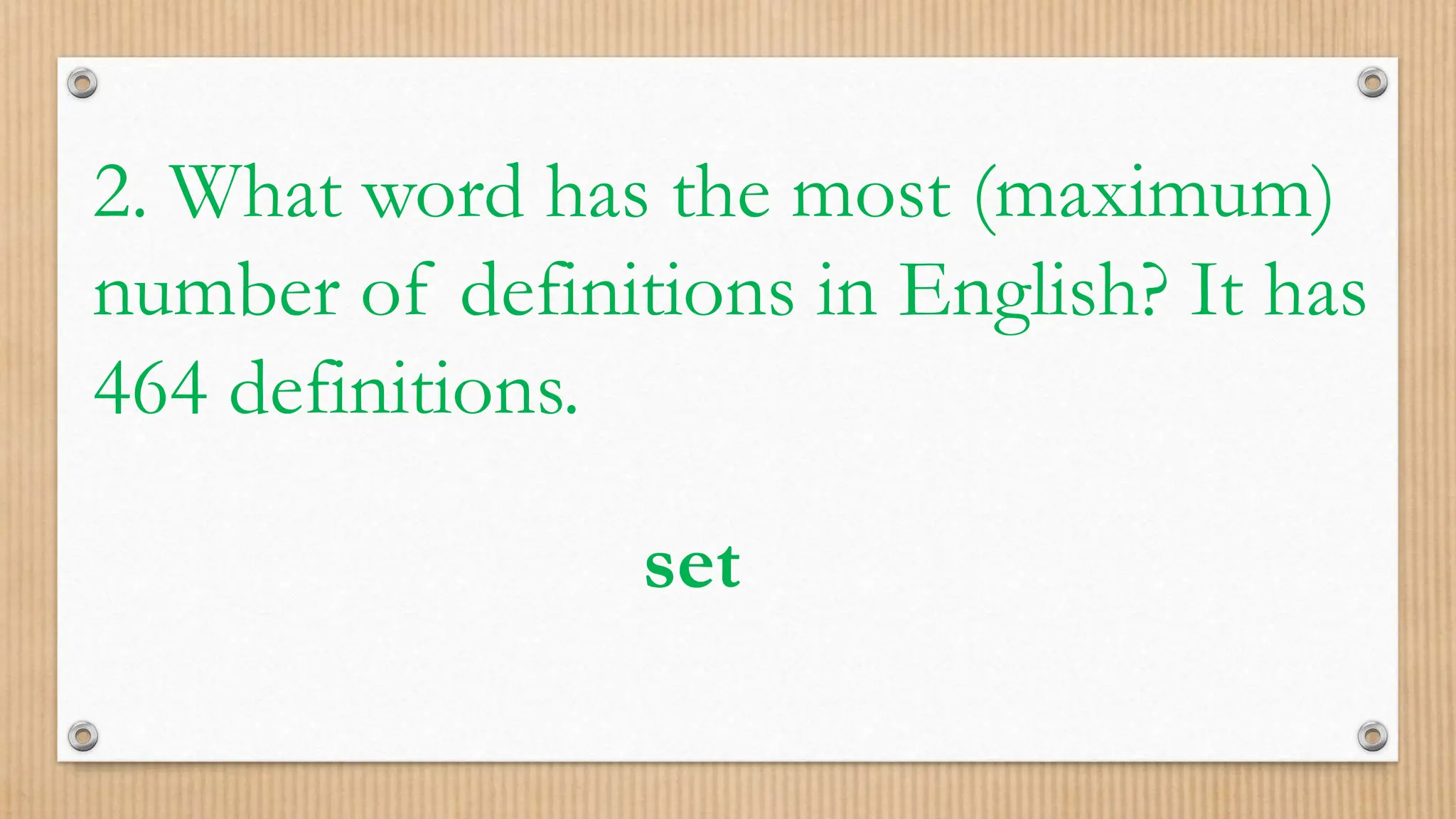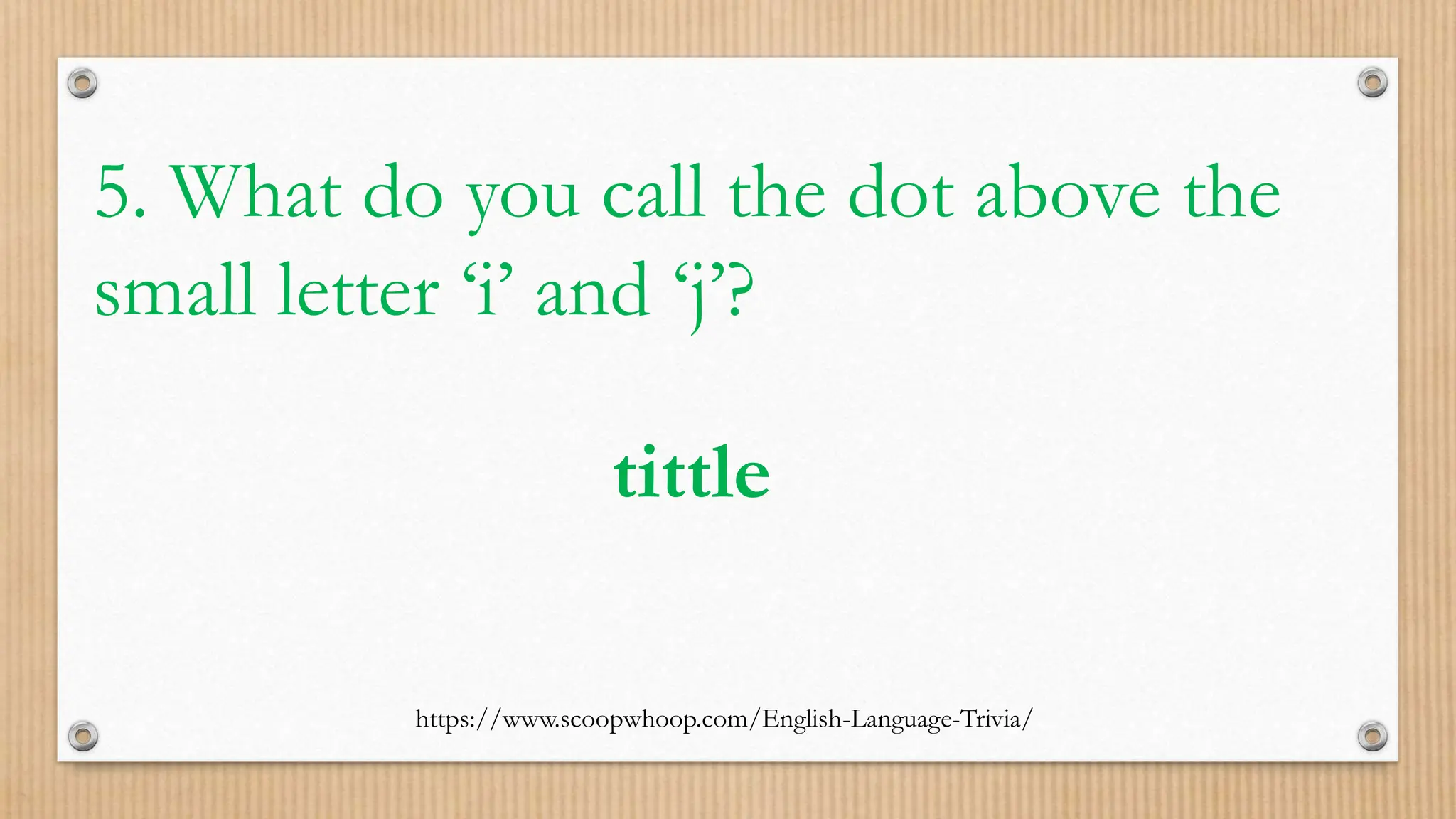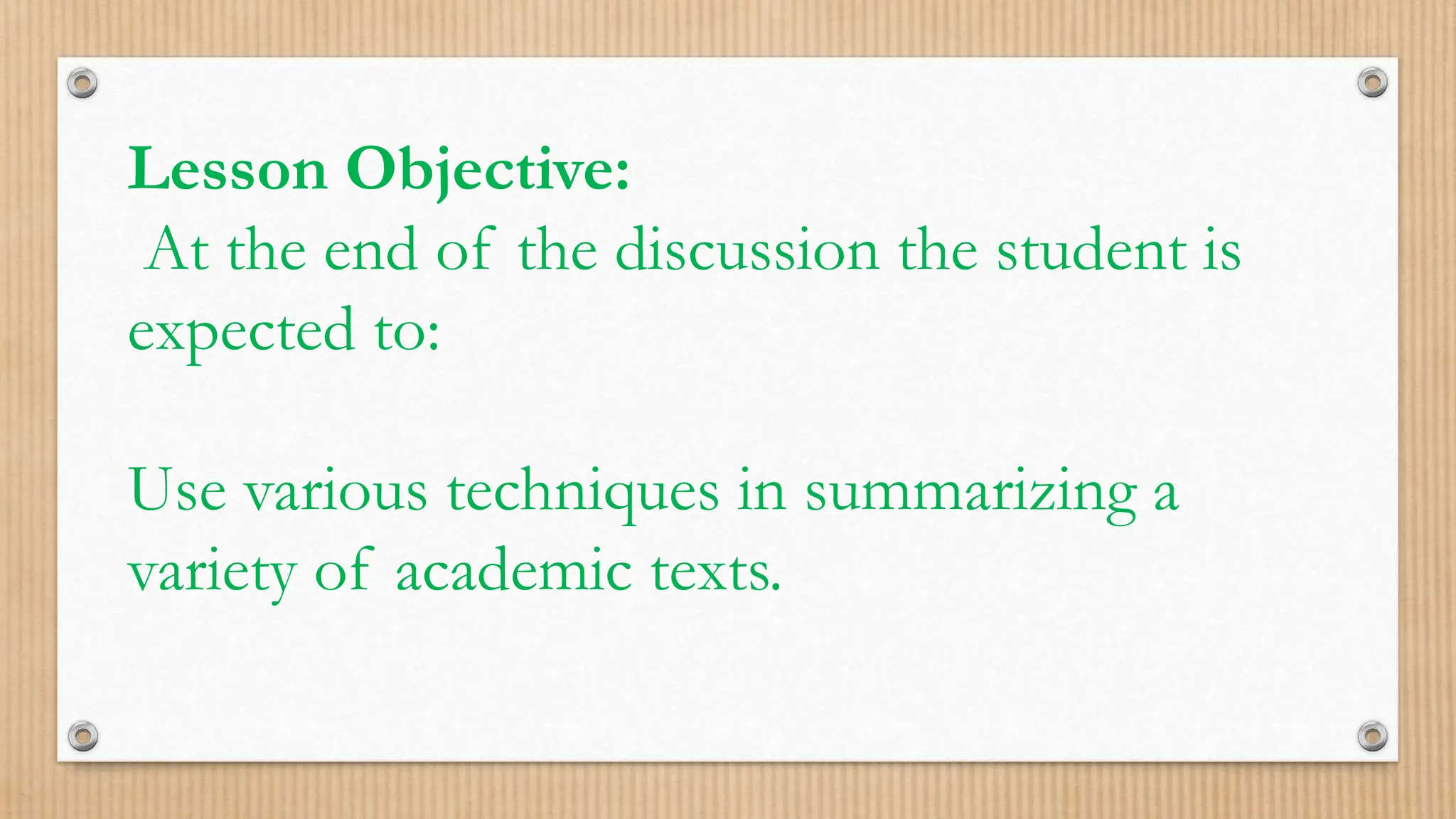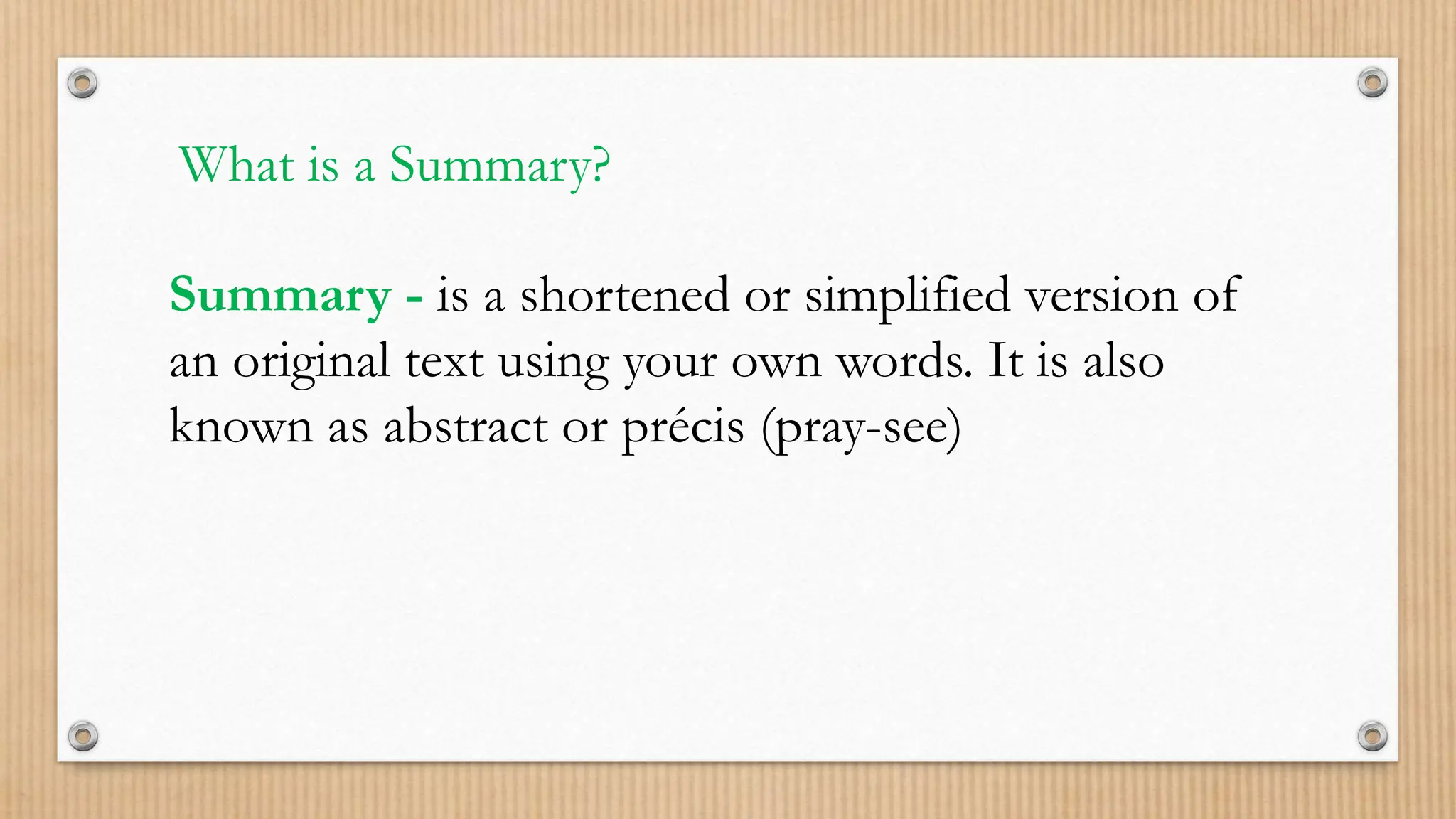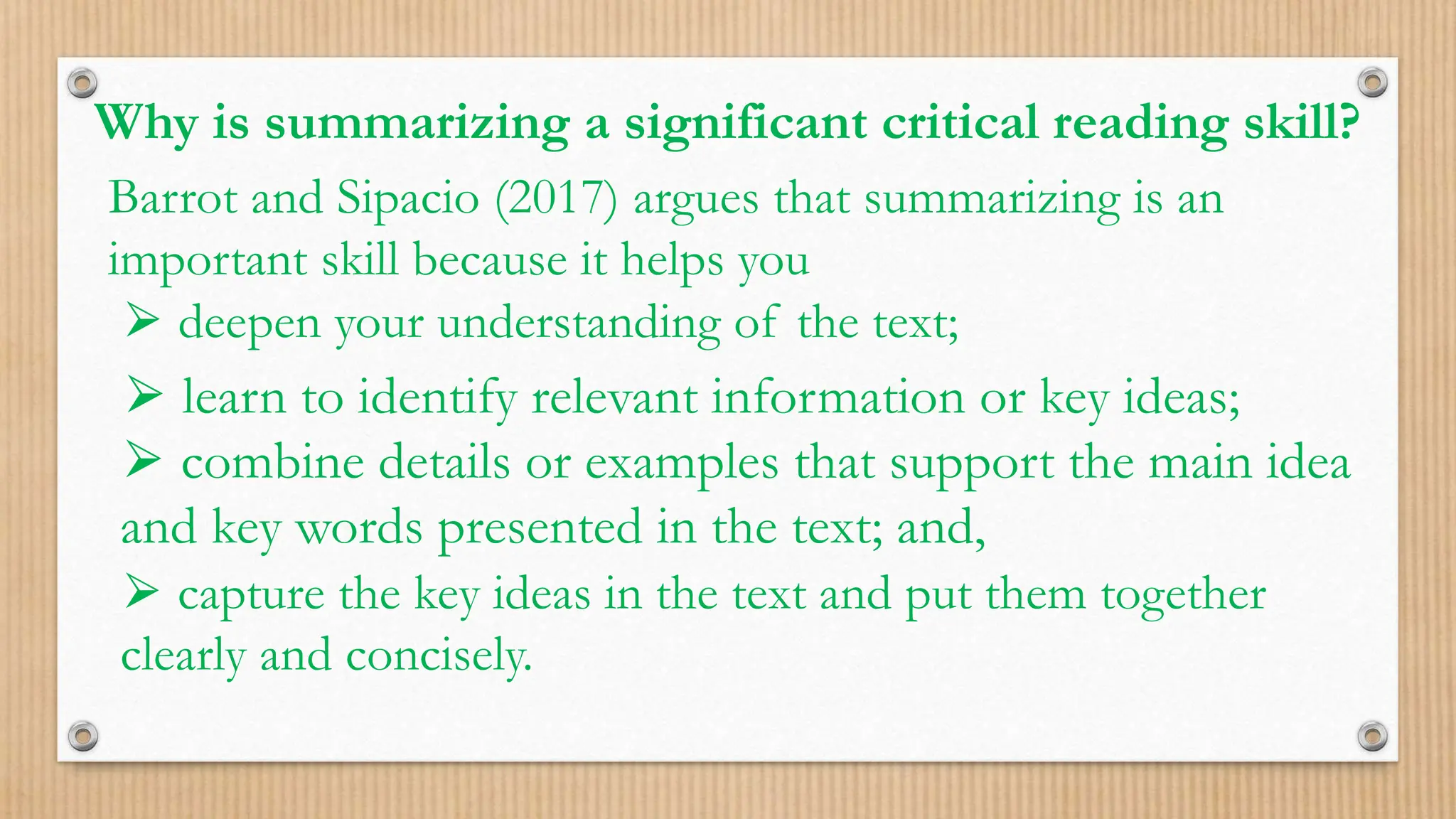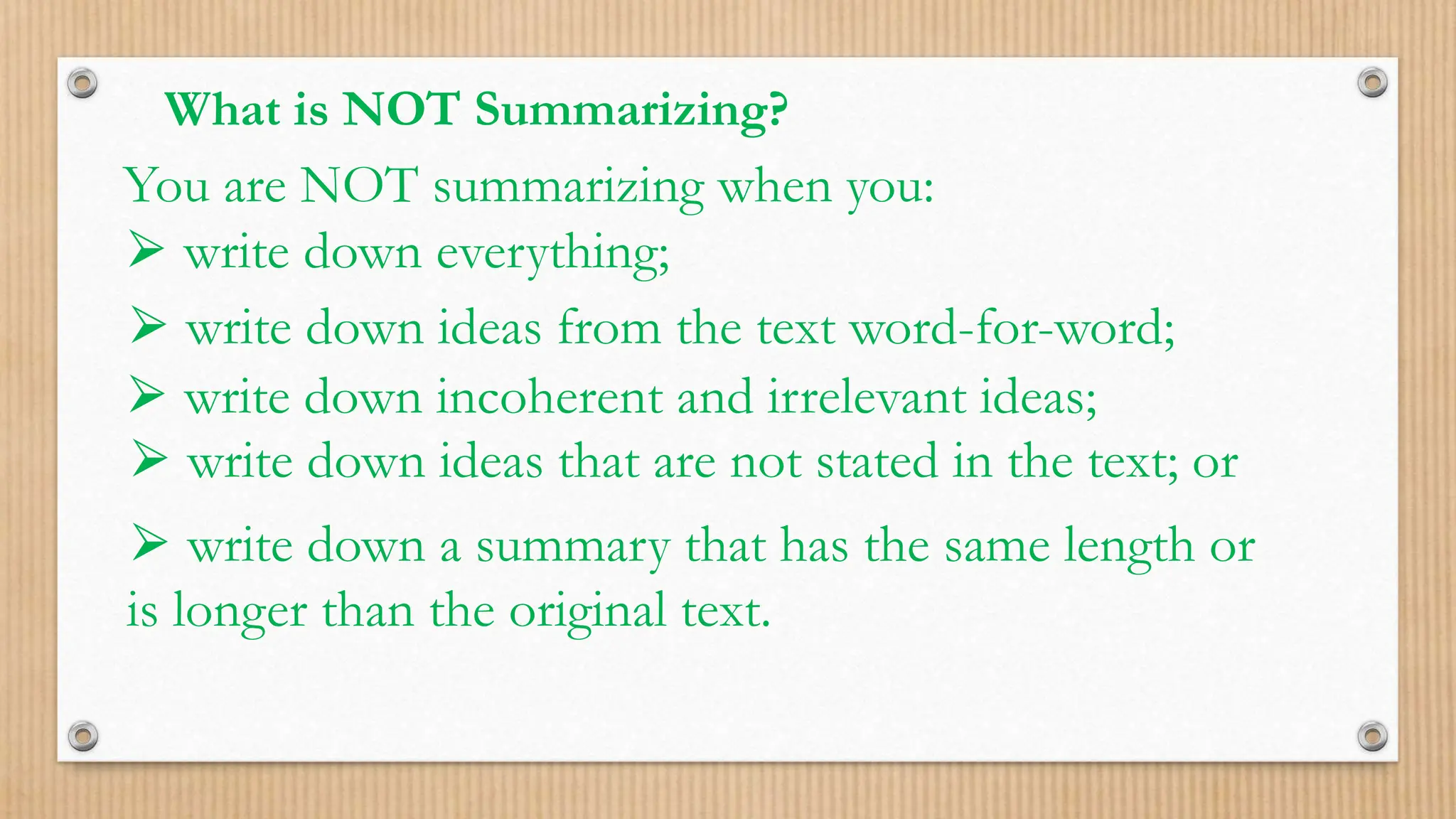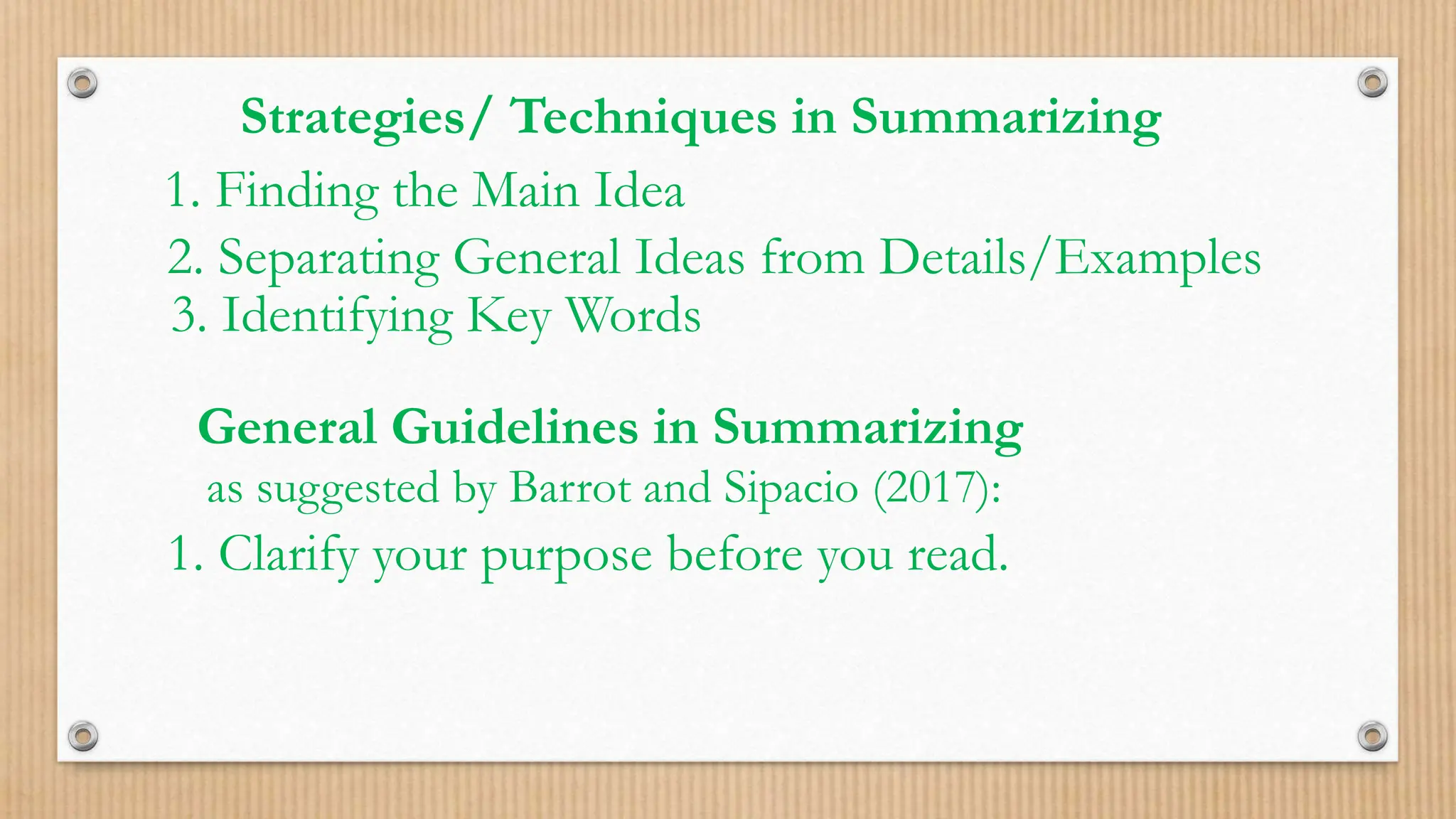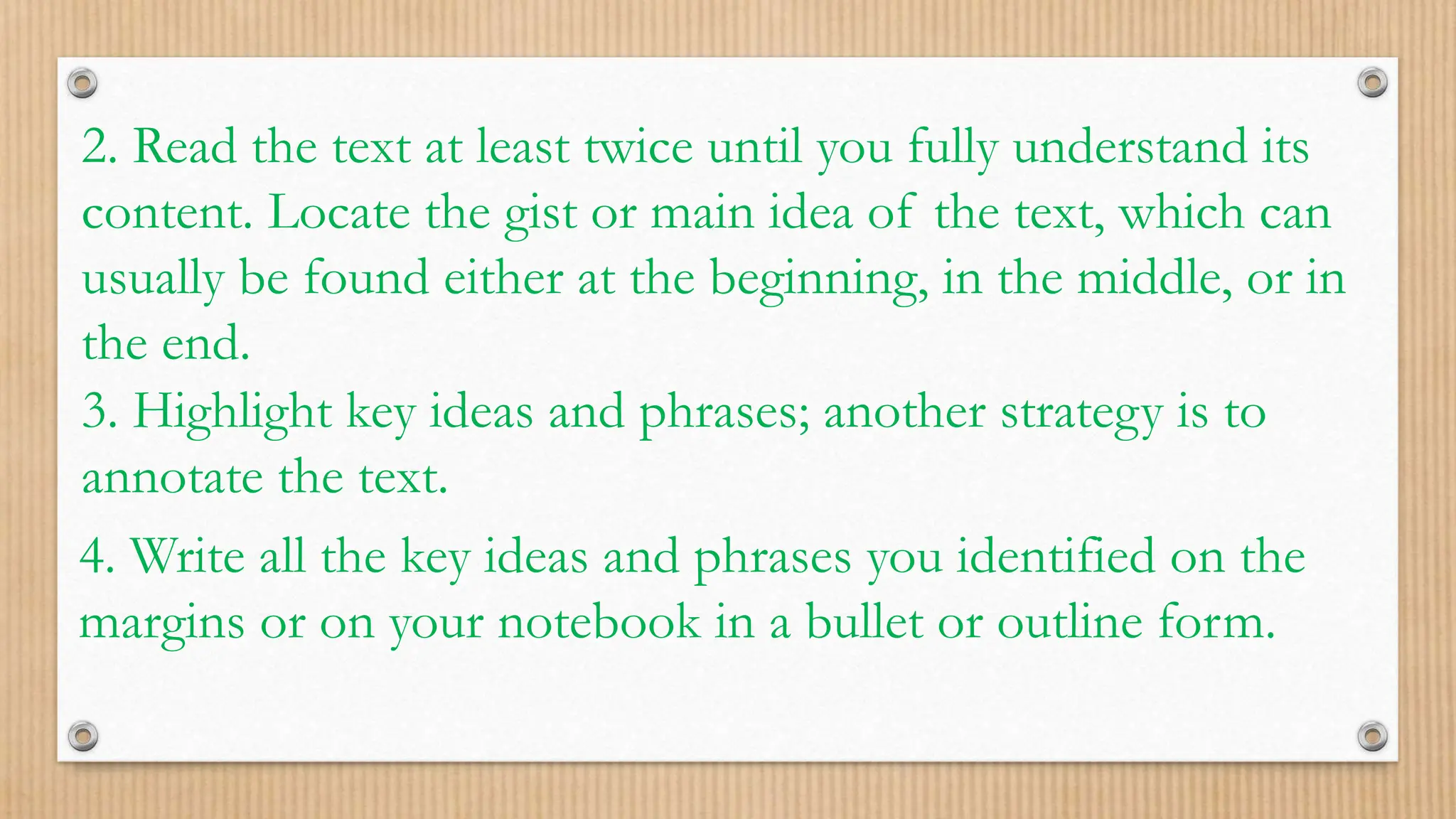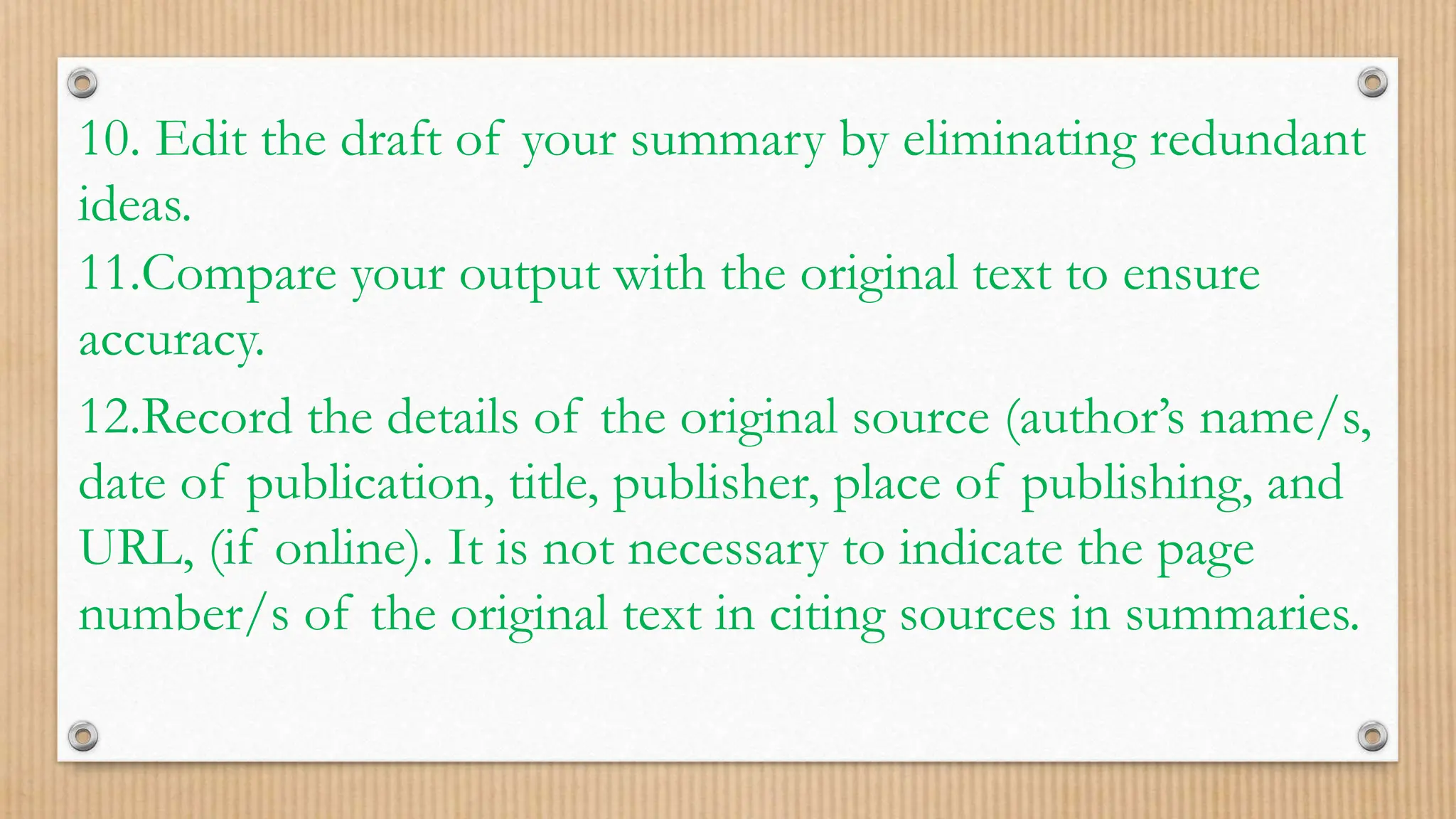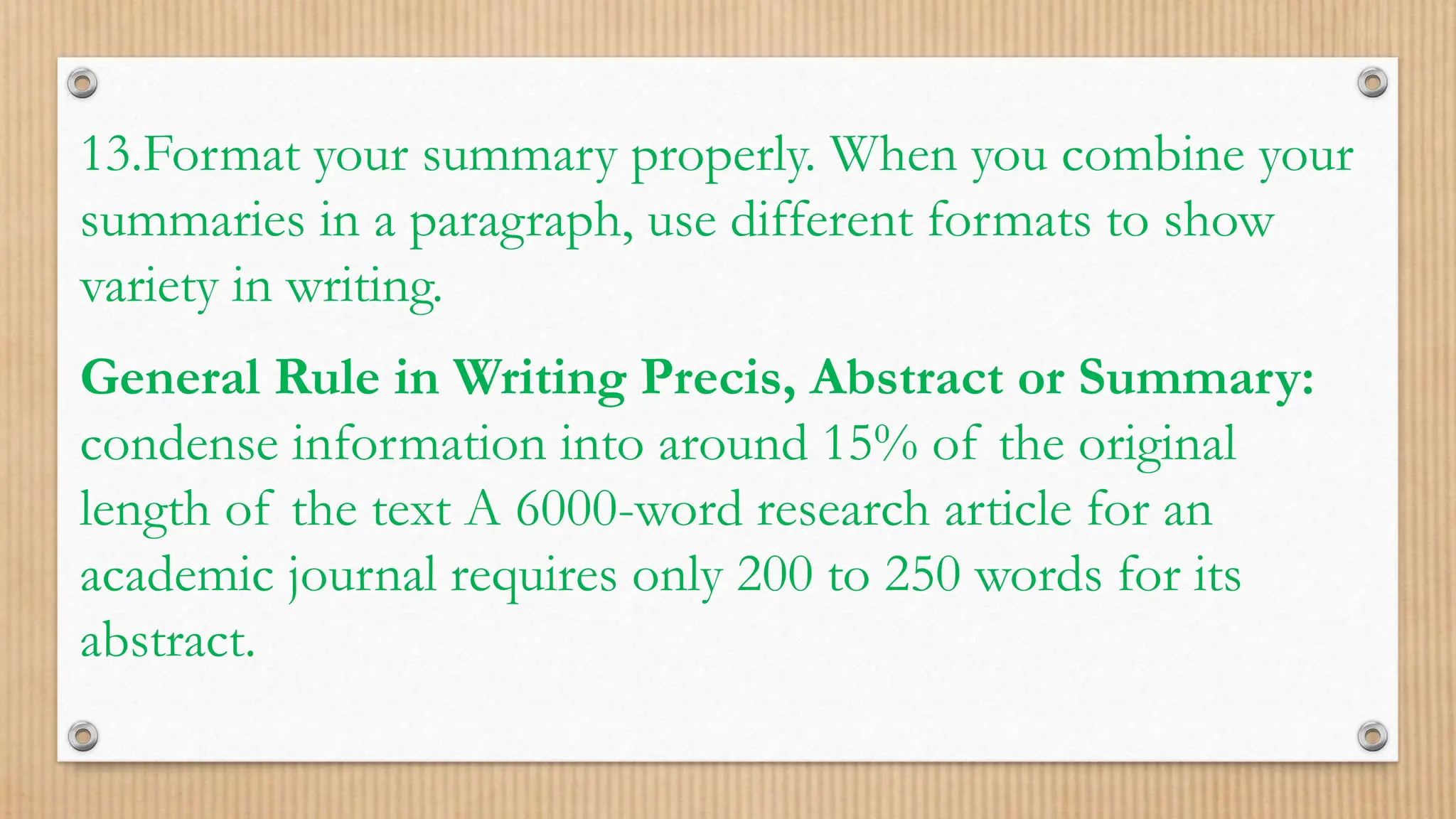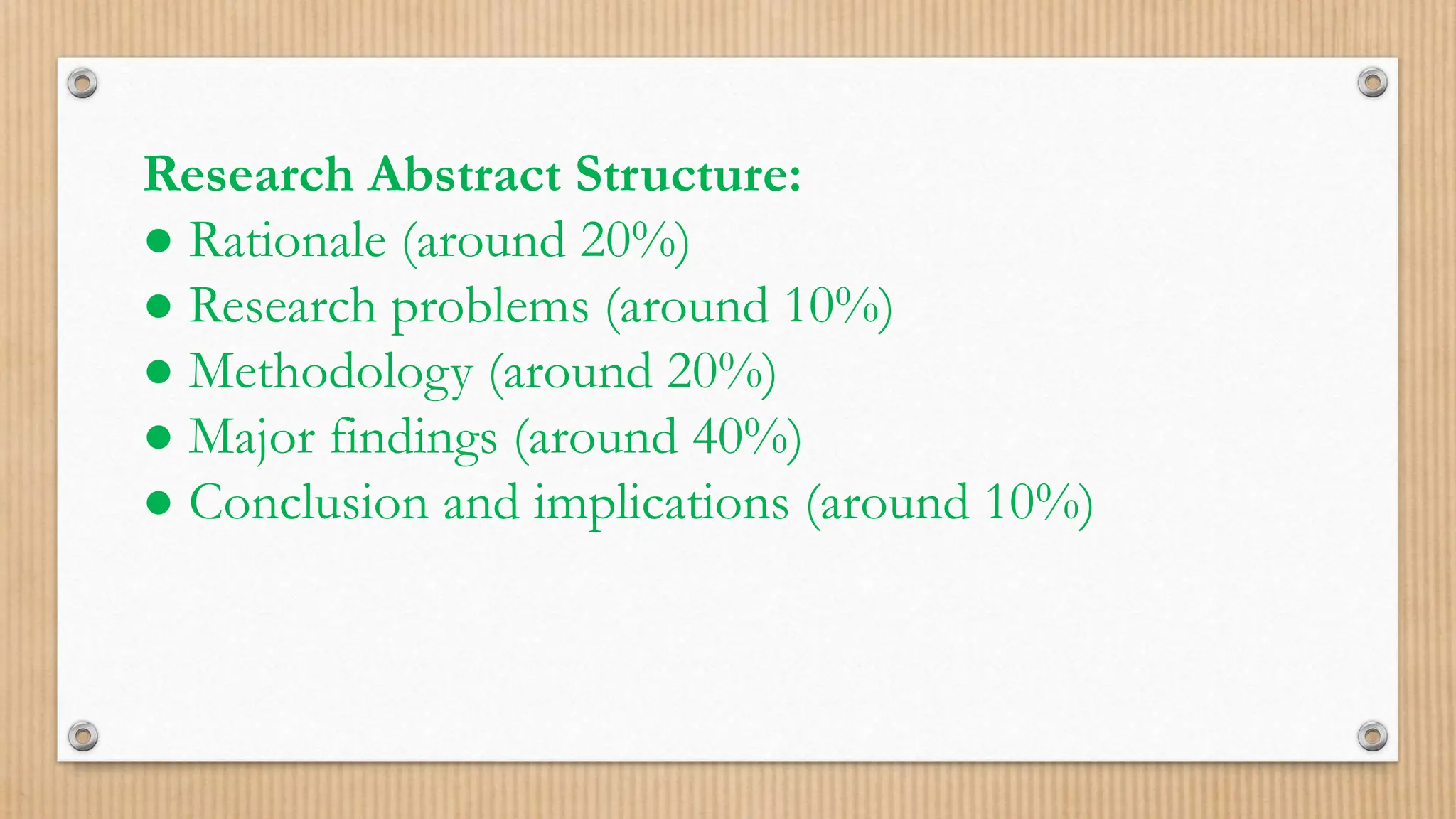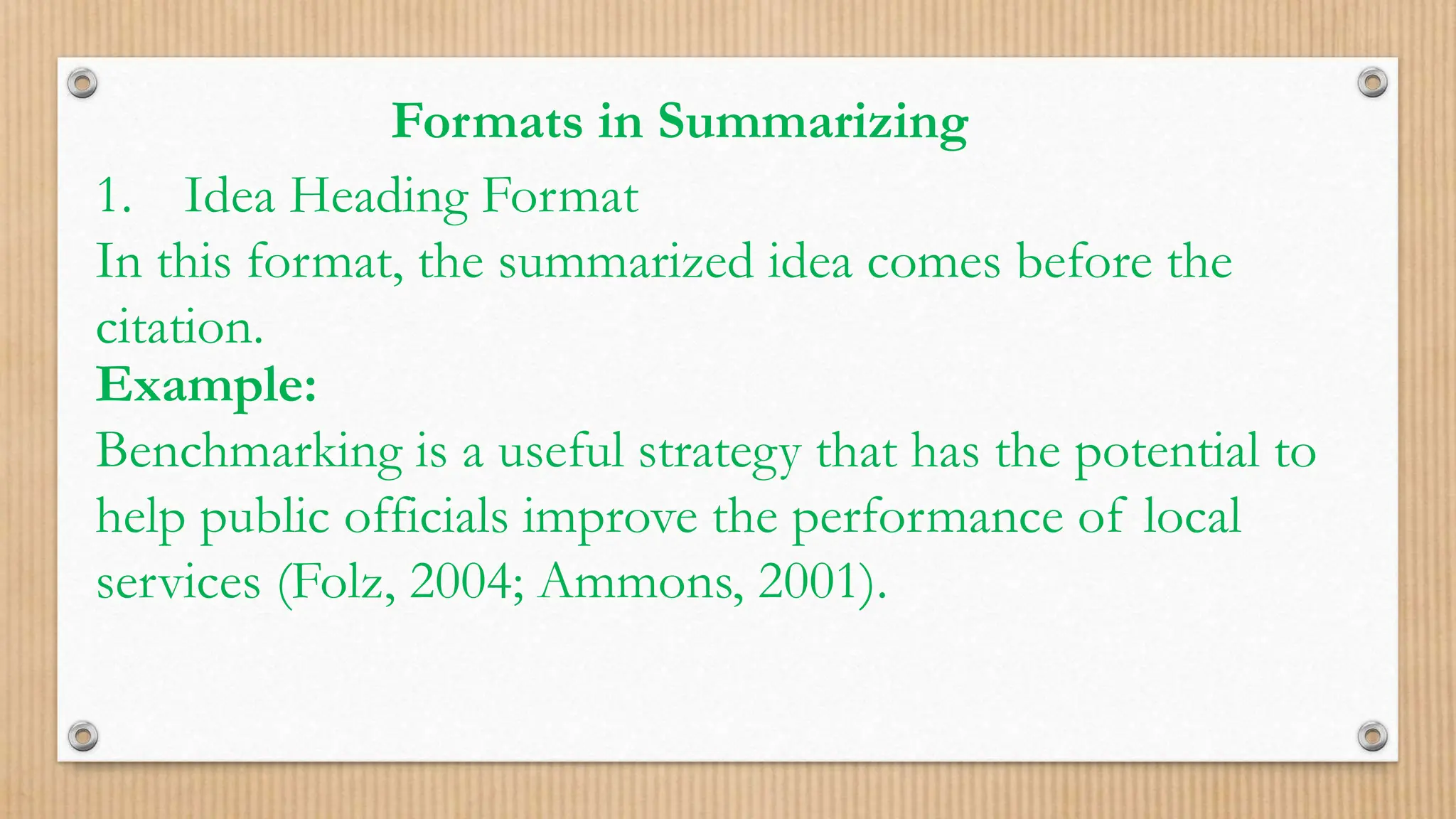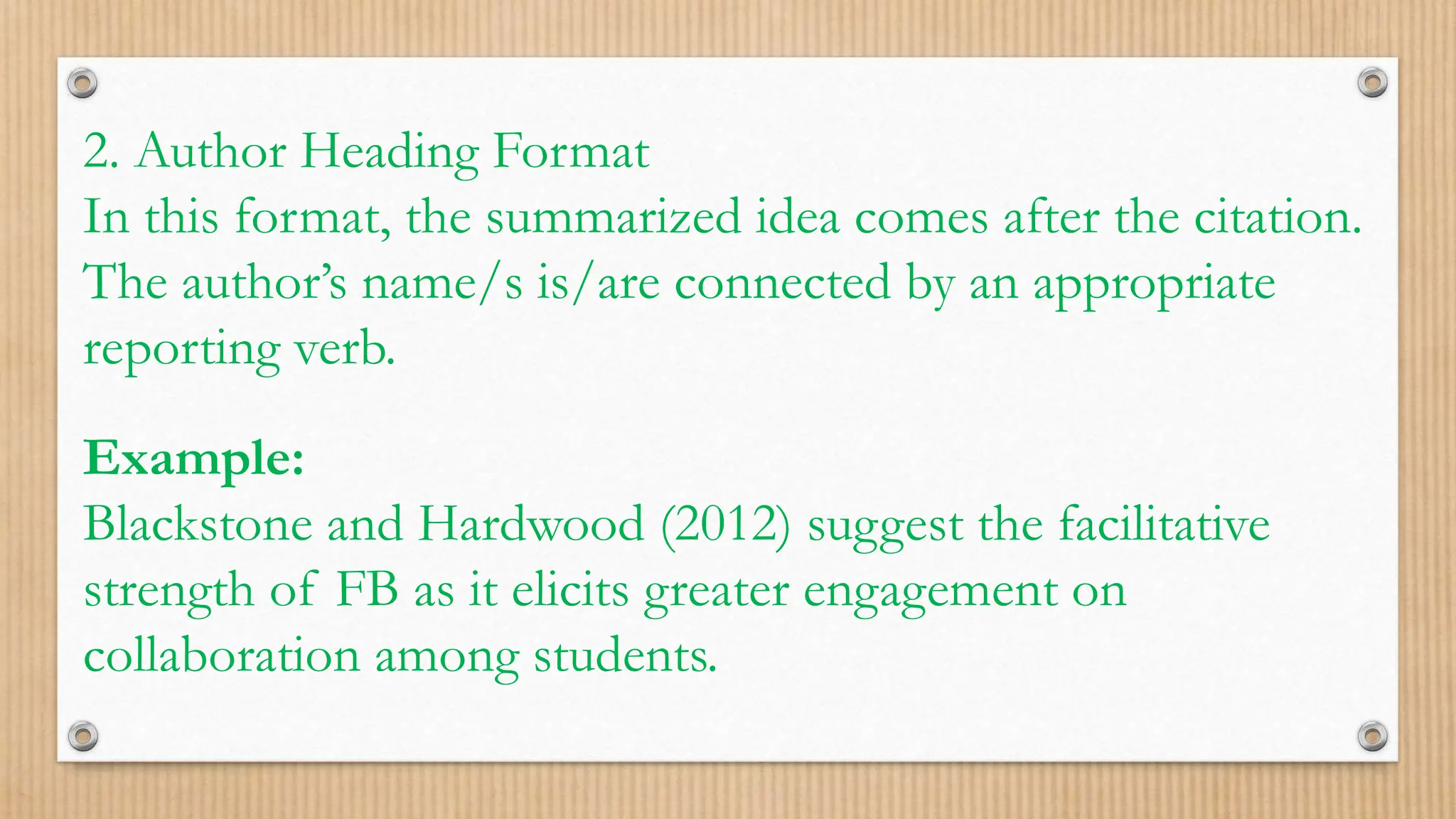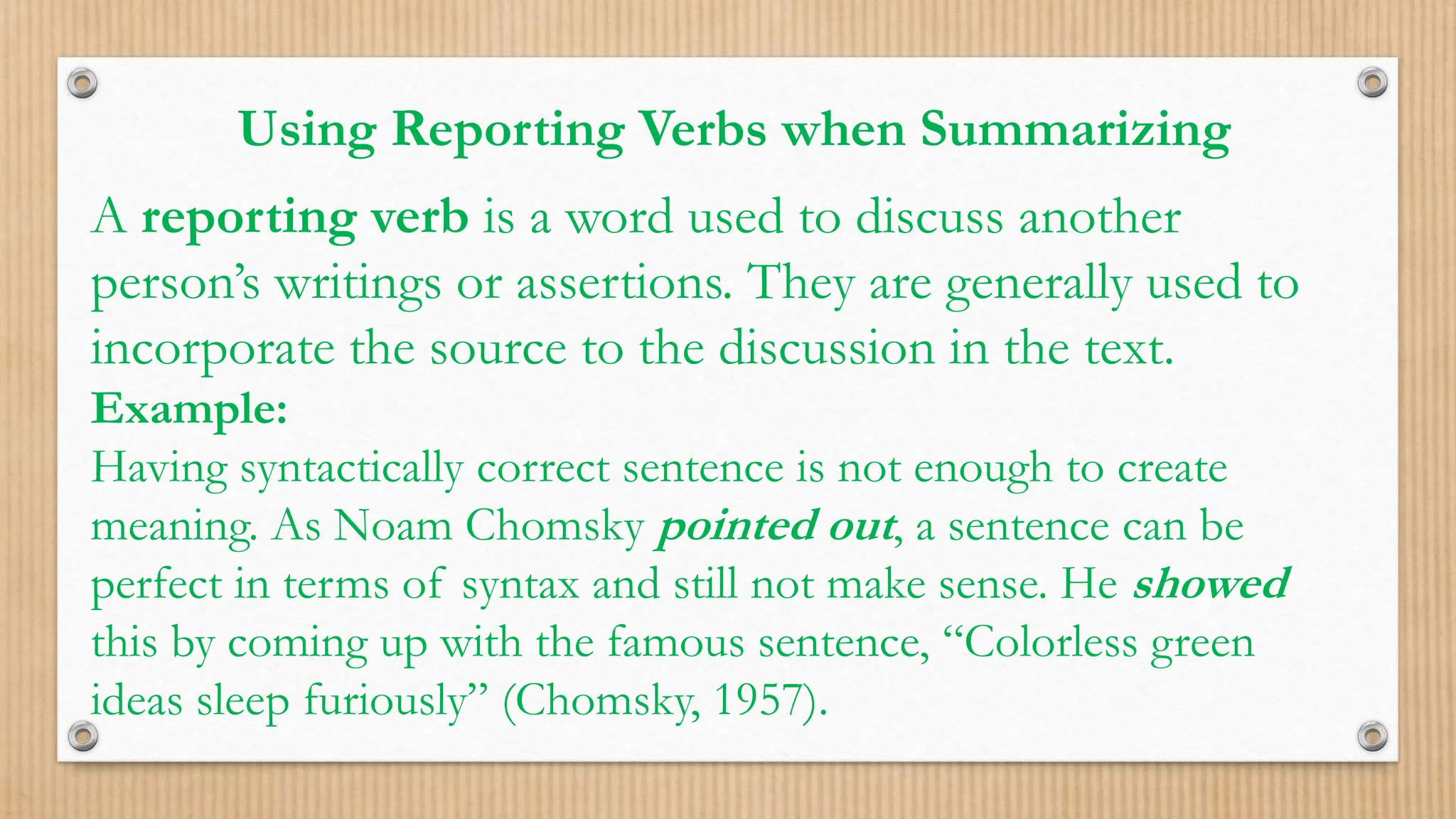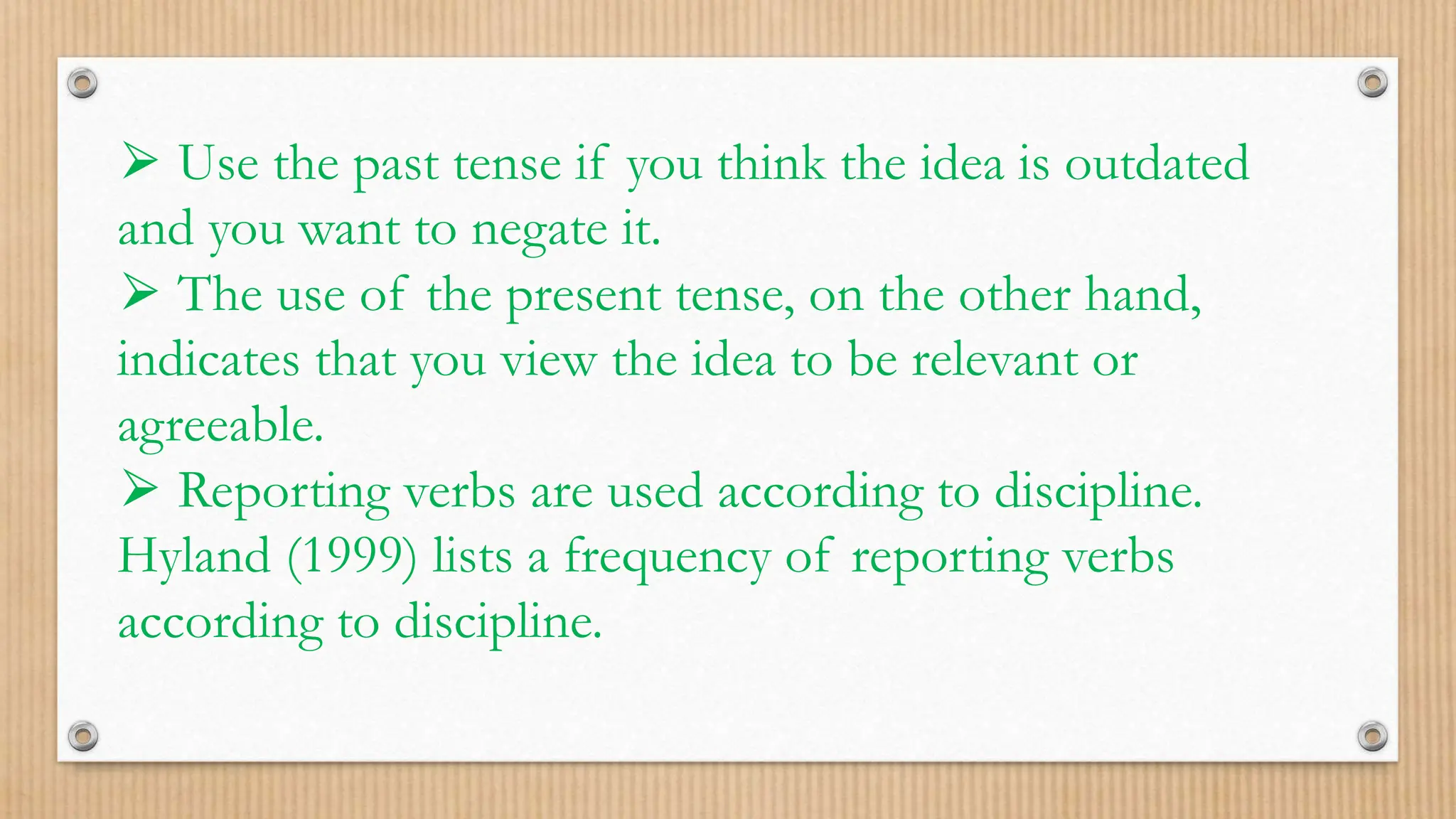The document discusses techniques for summarizing academic texts. It begins by defining a summary as a shortened version of the original text using one's own words. Summarizing is an important critical reading skill as it helps deepen understanding, identify key ideas, and present the main concepts concisely. The document outlines best practices for summarizing, such as reading the text multiple times to understand the main idea, highlighting important details, and combining ideas into coherent paragraphs without copying verbatim. General guidelines recommend summarizing into 15% of the original length. The document describes structures for different types of summaries and emphasizes using reporting verbs and cohesive devices to incorporate sources smoothly.
